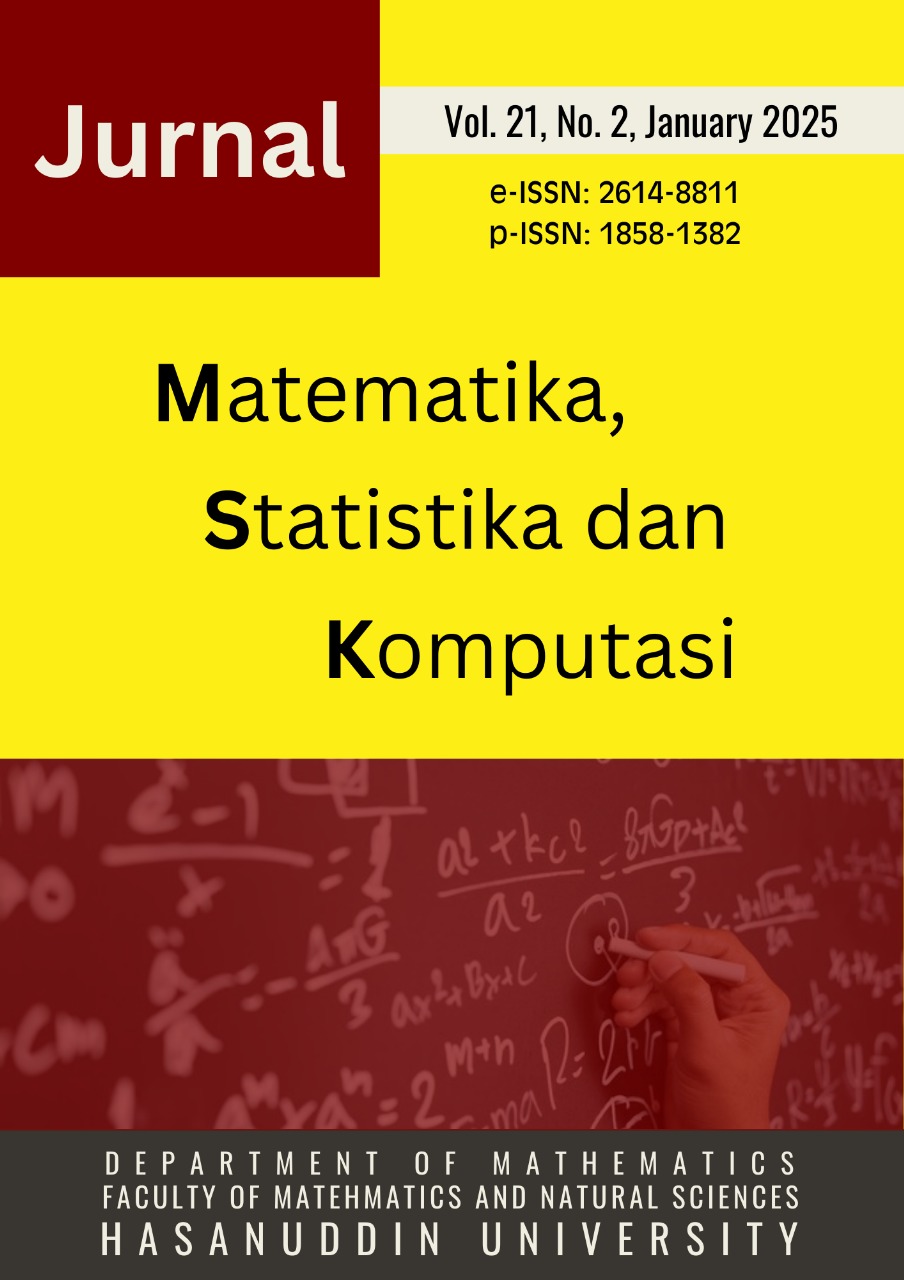Hopf bifurcation in a dynamic mathematical model in facultative waste stabilization pond
DOI:
https://doi.org/10.20956/j.v21i2.41888Keywords:
Hopf bifurcation, dynamic mathematical model, stabilization pondAbstract
In this paper, we discuss the predator-prey model using Holling type II functional response with the time delay in facultative stabilization pond. In this research, we discuss the predator-prey model using Holling type II functional response with the time delay, determining the equilibrium point, the stability analysis of predator-prey model using Holling type II functional response with the time delay and numerical simulation of the predator-prey model using Holling type II functional response with the time delay. The method used to analyse the problem is by literature study. The steps used are the development of a mathematical model of change of dissolved oxygen concentration, phytoplankton and zooplankton, mathematical equation solving algorithm, field data, simulation using Maple and Mathematica 9 software and validation with research.
References
[1] Anton, H., 2005. Elementary Linear Algebra 9th Edition. Singapore: John Wiley &Sons.
[2] Clark, D. N., 1999. Analysis Calculus and Differential Equation. New York: CRC Press.
[3] Clark, D. N. 2000. Dictionary of Analysis, Calculus and Differential Equations. New York: CRC Press, Boca Raton.
[4] Hull, V., 2008. Modelling dissolved oxygen dynamics in coastal lagoons. Ecological Modelling, Vol. 211, 468–480.
[5] Irwan, 2009. Dynamic Behavior of Competition System Between Tumors with Immune in Delay Differential Equations. Department of Mathematics ITS.
[6] Liao, X. et al., 2007. Stability of Dynamical Systems. Elsevier, Vol. 5.
[7] Misra, A. K, 2010. Modeling the depletion of dissolved oxygen in a lake due to submerged macrophytes. Nonlinear Analalysis Modelling and Control, Vol. 15, No. 2, 185– 198.
[8] Misra, A. K. et al., 2011. Modeling the depletion of dissolved oxygen in a lake due to algal bloom: Effect of time delay. Advances in Water Resources, Vol. 34, No. 12, 1232–1238.
[9] Olsder, G. J. et al., 2004 Mathematical System Theory. Netherlands: VVSD.
[10] Strogatz, S. H. 2014. Nonlinear Dynamics and Chaos: with Applications to Physics, Biology, Chemistry, and Engineering Second Edition. Massachusetts: Cambridge Perseus Books.
[11] Sekerci, Y., Petrovskii, S., 2015. Mathematical Modelling of Plankton–Oxygen Dynamics Under the Climate Change. Bull Math Biol, Vol. 77, No. 12, 2325–2353.
Downloads
Published
How to Cite
Issue
Section
License
Copyright (c) 2025 Jurnal Matematika, Statistika dan Komputasi

This work is licensed under a Creative Commons Attribution 4.0 International License.

This work is licensed under a Creative Commons Attribution 4.0 International License.
Jurnal Matematika, Statistika dan Komputasi is an Open Access journal, all articles are distributed under the terms of the Creative Commons Attribution License, allowing third parties to copy and redistribute the material in any medium or format, transform, and build upon the material, provided the original work is properly cited and states its license. This license allows authors and readers to use all articles, data sets, graphics and appendices in data mining applications, search engines, web sites, blogs and other platforms by providing appropriate reference.







